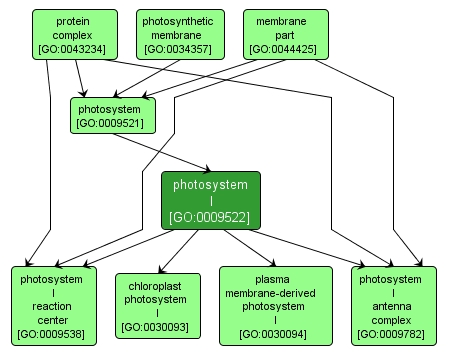| Desc: |
A photosystem that contains an iron-sulfur reaction center associated with accessory pigments and electron carriers. In cyanobacteria and chloroplasts, photosystem I functions as a light-dependent plastocyanin-ferredoxin oxidoreductase, transferring electrons from plastocyanin to ferredoxin; in photosynthetic bacteria that have only a single type I photosystem, such as the green sulfur bacteria, electrons can go either to ferredoxin (Fd) -> NAD+ or to menaquinone (MK) -> Cytb/FeS -> Cytc555 -> photosystem I (cyclic photophosphorylation). |














